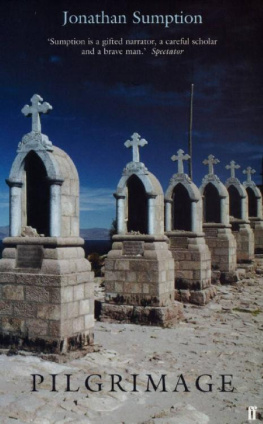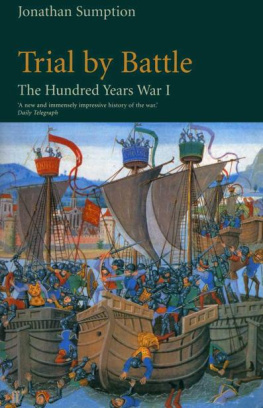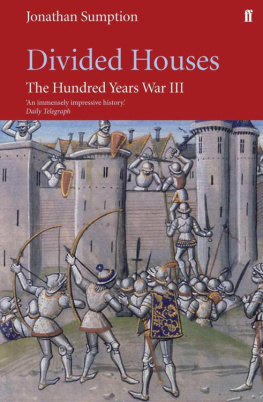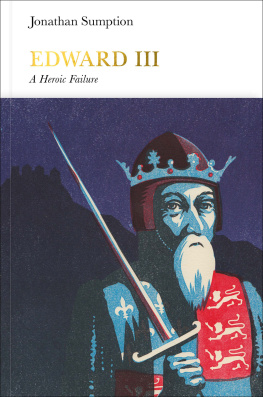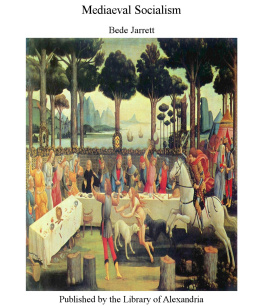Jonathan Sumption - Pilgrimage : An Image of Mediaeval Religion
Here you can read online Jonathan Sumption - Pilgrimage : An Image of Mediaeval Religion full text of the book (entire story) in english for free. Download pdf and epub, get meaning, cover and reviews about this ebook. year: 1976, publisher: Rowman and Littlefield, genre: Religion. Description of the work, (preface) as well as reviews are available. Best literature library LitArk.com created for fans of good reading and offers a wide selection of genres:
Romance novel
Science fiction
Adventure
Detective
Science
History
Home and family
Prose
Art
Politics
Computer
Non-fiction
Religion
Business
Children
Humor
Choose a favorite category and find really read worthwhile books. Enjoy immersion in the world of imagination, feel the emotions of the characters or learn something new for yourself, make an fascinating discovery.
- Book:Pilgrimage : An Image of Mediaeval Religion
- Author:
- Publisher:Rowman and Littlefield
- Genre:
- Year:1976
- Rating:4 / 5
- Favourites:Add to favourites
- Your mark:
- 80
- 1
- 2
- 3
- 4
- 5
Pilgrimage : An Image of Mediaeval Religion: summary, description and annotation
We offer to read an annotation, description, summary or preface (depends on what the author of the book "Pilgrimage : An Image of Mediaeval Religion" wrote himself). If you haven't found the necessary information about the book — write in the comments, we will try to find it.
Jonathan Sumption: author's other books
Who wrote Pilgrimage : An Image of Mediaeval Religion? Find out the surname, the name of the author of the book and a list of all author's works by series.
Pilgrimage : An Image of Mediaeval Religion — read online for free the complete book (whole text) full work
Below is the text of the book, divided by pages. System saving the place of the last page read, allows you to conveniently read the book "Pilgrimage : An Image of Mediaeval Religion" online for free, without having to search again every time where you left off. Put a bookmark, and you can go to the page where you finished reading at any time.
Font size:
Interval:
Bookmark:
AN IMAGE OF MEDIAEVAL RELIGION
Jonathan Sumption

TO MY FRIENDS
PLATES
between pages 184 and 185
MAPS
I began by imagining (perhaps all historians do) that the subject of this book could be neatly confined between two convenient dates, like a row of disintegrating French paperbacks between two bookends . 1050 to 1250 was the period I had in mind. In fact, religious history cannot be divided into digestible slabs in this convenient fashion. Mediaeval Christianity inherited certain ideas from the classical past and bequeathed others to the modern world. The spiritual ideals of St. Bernards day are incomprehensible when divorced from their origins, and misleading without some account of the process of distortion and decay which ultimately overcame them. Even the Reformation is not as decisive a break as one would suppose.
So, as it stands, the book is an attempt to draw a thin line through a very long period of history. In an age of academic specialization this approach has advantages and disadvantages. It does make it possible to present a reasonably coherent picture of mediaeval spiritual life as a whole, through the medium of an important and, I believe, representative part of it. So much for the advantages; now the disadvantages, of which the chief is that I may often have indulged in broad generalizations which lack of space has prevented me from justifying at length. I wish it were possible to write about the middle ages as Keith Thomas has recently done about the sixteenth and seventeenth centuries. But the evidence does not exist. The search for origins and consequences in mediaeval history is bound to be fruitless. Finality is an illusion. The conclusions drawn here must be regarded as my own impressions buttressed by examples which I consider representative. For every example, a counter-example could easily be cited. I have tried to avoid a tone of bold confidence, but there are no doubt places where the reader should insert a mental probably at the beginning of a sentence.
One major omission should be mentioned. I have concentrated heavily on France and on the cultural world of which France was the centre England, northern Spain, central and southern Italy. Germany has not been entirely ignored, but major sanctuaries like Cologne and Aachen have not received, the attention they deserve. There are a number of reasons for this, amongst them the extreme sparseness of the evidence before the fifteenth century. But I cannot deny that self-indulgence has been an important factor. I love France. German history bores me. There is, moreover, a homogeneity about the French cultural world which makes it possible to speak of it as a whole. Germany and central Europe are in some respects exceptional and ought to be considered separately. This is already a long book. I had no desire to make it longer.
I owe a very considerable debt to the President and fellows of Magdalen College, Oxford, for the leisure and agreeable surroundings which I have enjoyed there both as an undergraduate and as a fellow. I have benefited enormously from conversations with my old tutor, Karl Leyser, more, perhaps, than he realizes. Dr. Hugh Sinclair and Dr. David Robson have helped me out with some medical matters in chapter five. The staff of at least a dozen libraries in this country and in France and Italy have been unfailingly helpful, none more so than the staff of the Bodleian Library, who staggered daily to seat U.219 bowed down beneath the weight of ancient folios. My greatest debt is to my wife, and the fact that this is a common experience among authors will not prevent me from saying so.
J.P.C.S.
Greenwich, 1974
CHAPTER I
The world which the mediaeval pilgrim left behind him was a small and exclusive community. The geographic and social facts of life made it oppressive and isolated and, except in the vicinity of major towns and truck roads, the chief qualities of human life were its monotonous regularity and the rule of overpowering conventions . Existence, for the great majority, meant rural existence. Towns were few and small, and separated themselves from the country by moats of legal privilege. Villages asserted their independence and marked out their territory with rows of stakes and crosses. Even where migration occurred, it was not allowed to disturb the placid conventions of rural life. English villages of the thirteenth century were forbidden to receive strangers, and were held collectively responsible for crimes committed in their midst. Townsmen were enjoined to watch for strangers and lock their gates at sunset.
Nowhere was the closeness of these communities more apparent than in their religious life. What is a parish?, asked the thirteenth-century canonist Henry of Susa; it is a place with well-defined frontiers whose inhabitants belong to a single church. The parishioner belonged in a very real sense to his church, and lived his whole life under its shadow. There, and there alone, he was baptized and married, attended Sunday Mass, paid his tithe and offerings, and there he was buried when he died. The statutes of the church constantly reminded him of the fact. No one may receive the sacraments in any church but his own. On no account admit to confession any person from another parish. No stranger is to be allowed burial or marriage in the parish church. A thirteenth-century archbishop of Bordeaux excommunicated all strangers who have abandoned their own parish churches which they ought to be attending, for the parish priest should be able to see the face of every member of his flock. Pierre de Collemieu, archbishop of Rouen, required parish priests to keep a list of their parishioners, and to eject any strangers whom they found in their churches on Sundays except for noblemen and beggars. It was not unknown for those who died outside their own parishes to be exhumed and brought back to their own churchyards.
The Lateran council of 1215 reinforced this dependence on the parish by making every layman confess his sins at least once a year to his parish priest, and to no one else. Only bona fide travellers and those in danger of death were permitted to confess to a strange priest, while those clergy who had no parishes were forbidden to hear confessions at all. The right of the mendicant orders to hear them was hotly resisted by the secular clergy as an intrusion upon their prerogatives, and was only tardily recognized by the papacy. Confession, the most personal act of piety which the ordinary man performed, was far from being the anonymous ceremony found in the modern Roman Catholic Church. It is true that the actual words spoken were inaudible, but the sacrament itself was held in public, openly, and not in some private place, especially in the case of women, as the synod of Nmes ordained in 1284. Moreover the parish priest was expected to probe for further, undeclared, sins, and to inflict a lengthy cross-examination on the penitent. Several hand-books for priests were available in which useful and pertinent questions were set out for this purpose.
Dignity and privacy were not concepts dear to the hearts of mediaeval men, who conducted their communal lives on the unspoken assumption that the sins of one were the business of all. This was particularly true of breaches of sexual morality. In a small village near Bonneval in the Loire valley, the repentance of a prostitute at the end of the twelfth century was an event of public importance . Most of the inhabitants gathered in the street to debate whether she should go immediately to the nearest priest in Bonneval, or await his arrival for Mass on the following day. They decided to wait. In the morning they accompanied the sinner in a body to the church and, all speaking at once, recited her history to the priest. After a short homily, the priest confessed her in the presence of the villagers and sentenced her to an annual pilgrimage to Chartres. Then he absolved her amid scenes of emotion and jubilation. In the records of episcopal visitations it is clear that the majority of witnesses regarded eavesdropping and peeping through windows as a duty. When bishop Trefnant of Hereford visited his diocese in 1397, most of the laymen who appeared before him were accused by their neighbours of adultery, bigamy, quarrelling with their wives, denying conjugal rights to their husbands, and other matters which would now be regarded as private. A similar picture emerges from the records of a provincial society in France. When a Poitevin peasant-woman, Clmente Gaboreau, failed to appear in church one Sunday in 1387, her fellow parishioners recalled that she had often been seen entering and leaving the house of one Guillaume Achale and immediately suspected the worst. It was common knowledge in the village of Asnois (Poitou) that the wife of Pierre Vigoureux was the mistress of the parish priest. Jean Bourdeau, carpenter of Courlay (Poitou) was completely unaware that his wife was unfaithful to him, until several peeping-Toms told him so, whereupon he killed her with a sickle. The fifteenth-century author of a manual for parish priests no doubt had such incidents in mind when he warned his readers against all that standeth or hearkeneth by nights under walls, doors, or windows, for to spy touching evil.
Font size:
Interval:
Bookmark:
Similar books «Pilgrimage : An Image of Mediaeval Religion»
Look at similar books to Pilgrimage : An Image of Mediaeval Religion. We have selected literature similar in name and meaning in the hope of providing readers with more options to find new, interesting, not yet read works.
Discussion, reviews of the book Pilgrimage : An Image of Mediaeval Religion and just readers' own opinions. Leave your comments, write what you think about the work, its meaning or the main characters. Specify what exactly you liked and what you didn't like, and why you think so.

